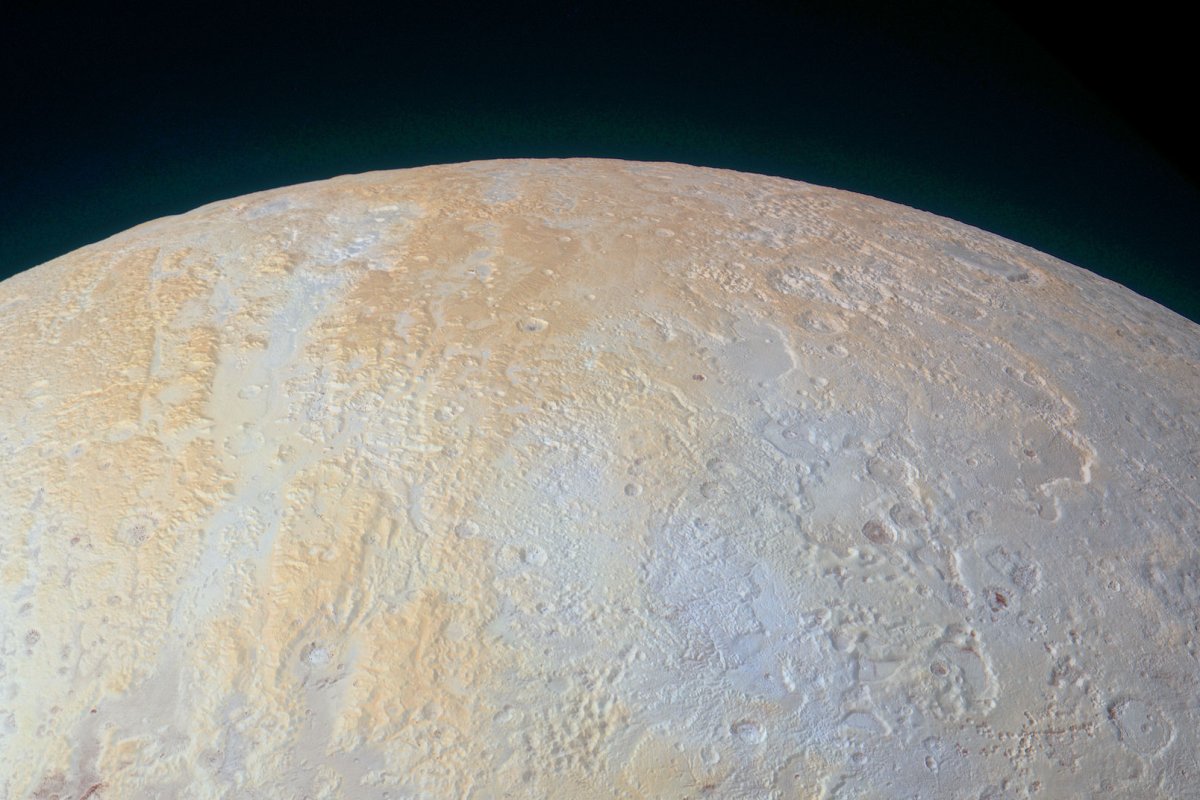For decades, Pluto remained one of the most mysterious objects in our solar system, until July 14, 2015, when NASA’s New Horizons spacecraft became the first mission to visit it up close, capturing breathtaking images of the distant world.
It took over nine years for New Horizons to reach Pluto after blasting off atop an Atlas 5 rocket on Jan. 19, 2006. After traveling billions of miles through the solar system, New Horizons sent home stunning images of Pluto and its moons, making headlines around the world.
It took more than 15 months for the spacecraft to send all of the 6.25 gigabytes of photos and data home for scientists to study.
“Such a lengthy period was necessary because the spacecraft was roughly 4.5 light-hours from Earth and it could only transmit 1-2 kilobits per second,” NASA said.
Here are some of the best images of Pluto and its moon Charon:
| A composite of enhanced color images of Pluto (lower right) and Charon (upper left), taken by NASA’s New Horizons spacecraft as it passed through the Pluto system on July 14, 2015. Photo courtesy of NASA |
| This image of haze layers above Pluto limb was taken by NASA New Horizons spacecraft. About 20 haze layers are seen. Photo courtesy of NASA |
 |
| Pluto nearly fills the frame in this image from NASA’s New Horizons spacecraft. The image was taken on July 13, 2015, when the spacecraft was 476,000 miles (768,000 kilometers) from the surface. Photo by NASA, Johns Hopkins University Applied Physics Laboratory and Southwest Research Institute |
 |
| NASA New Horizons scientists believe that the informally named feature Wright Mons, located south of Sputnik Planum on Pluto, and another, Piccard Mons, could have been formed by the cryovolcanic eruption of ices from beneath Pluto’s surface. Photo courtesy of NASA and JPL |
 |
| A detailed global mosaic color map of Pluto is based on a series of three color filter images obtained by the Ralph/Multispectral Visual Imaging Camera aboard New Horizons during the NASA spacecraft’s close flyby of Pluto in July 2015. Photo by NASA and JPL |
 |
| The International Astronomical Union (IAU), the internationally recognized authority for naming celestial bodies and their surface features, approved names of 14 surface features on Pluto in August 2017. Image from NASA, Johns Hopkins University Applied Physics Laboratory and Southwest Research Institute |
 |
| An enhanced color mosaic of Pluto taken approximately 15 minutes before New Horizons’ closest approach to Pluto. Image by NASA, Johns Hopkins University Applied Physics Laboratory and Southwest Research Institute |
 |
| This image was made just 15 minutes after New Horizons’ closest approach to Pluto on July 14, 2015, as the spacecraft looked back at Pluto toward the sun. Photo courtesy fo NASA and JPL |
The Pluto flyby changed what astronomers thought they knew about that tiny world. Instead of being just a cold rock, Pluto turned out to have ice mountains as tall as the Rockies, strange heart-shaped plains and even signs of possible underground oceans.
The mission also gave us our first close-up look at Pluto’s largest moon, Charon, which has deep canyons and a huge dark spot at the pole.
It was like discovering a whole new world hiding at the edge of our solar system.
